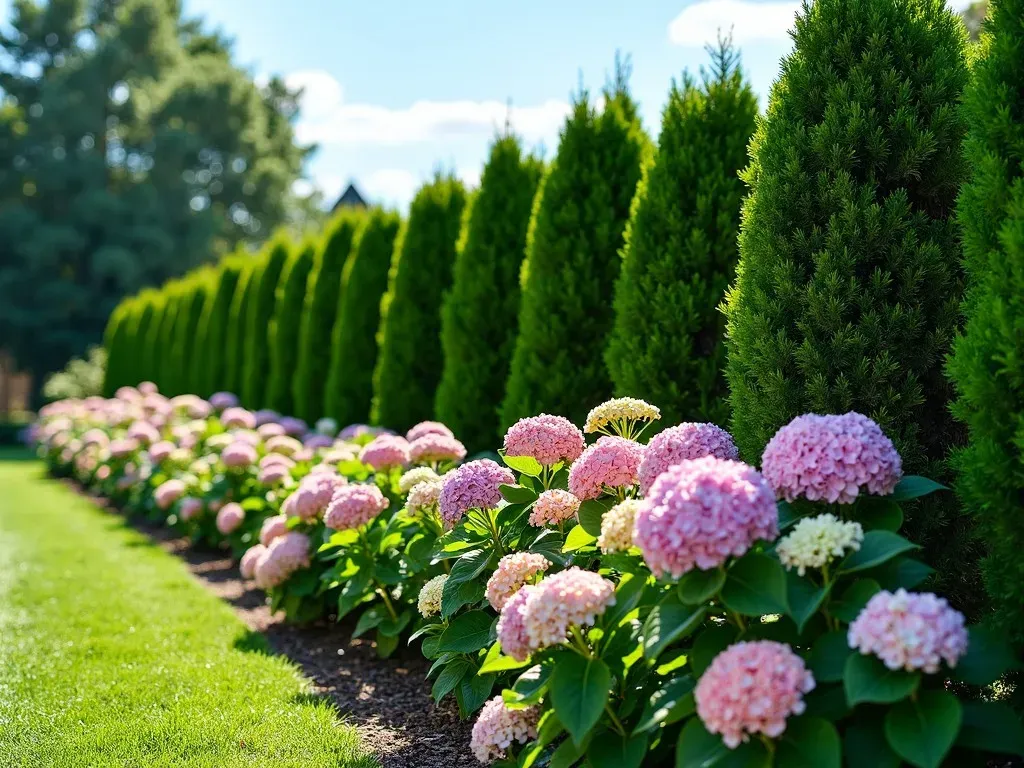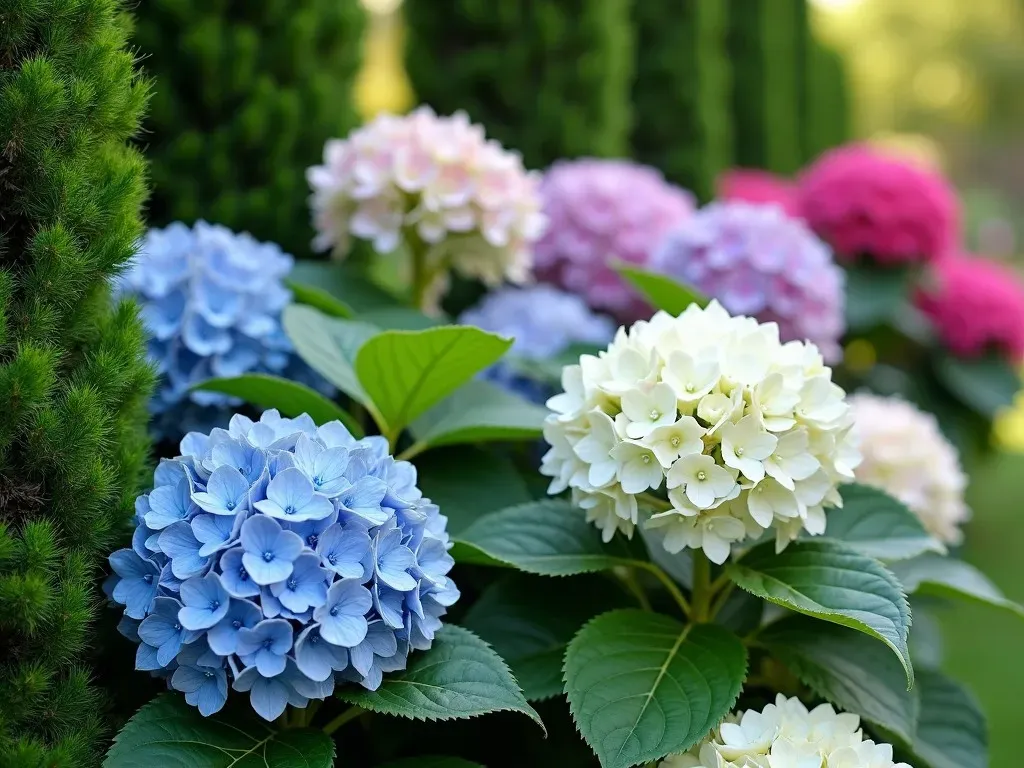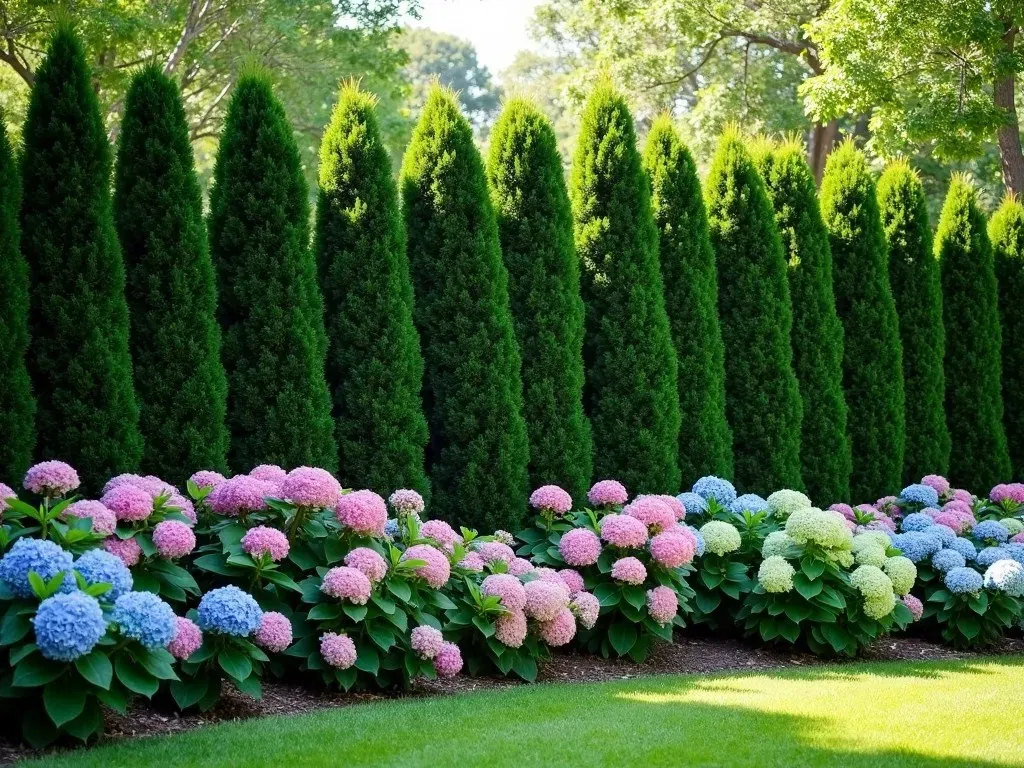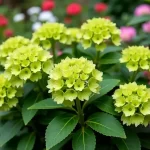Arborvitae and hydrangea are two exceptional plants that can add beauty, color, and privacy to your outdoor space. While arborvitae is an evergreen known for its tall, narrow form, providing excellent coverage, hydrangea brings a splash of vibrant colors with its stunning blooms. Together, they create a visually appealing and functional hedge that enhances your landscape.
The Beauty of Arborvitae: A Closer Look
Arborvitae, scientifically known as Thuja, is a popular choice for hedges and privacy screens due to its dense foliage and upright growth habit. Below are some essential characteristics of arborvitae:
Key Features of Arborvitae:
| Feature | Details |
|---|---|
| Height | Typically between 10 to 30 feet depending on the species |
| Spread | Ranges from 3 to 15 feet, making them suitable for various spaces |
| Foliage | Evergreen, needle-like leaves that can be bright green to yellowish-green |
| Growth Rate | Moderate to fast, depending on the specific variety |
| Sunlight | Thrives in full sun to partial shade |
| Soil | Prefers well-drained, moist soil |
| Hardiness Zone | USDA Zones 3-7 |
Benefits of Using Arborvitae
- Privacy: Arborvitae forms a thick privacy screen that deters nosy neighbors.
- Year-Round Greenery: The evergreen nature of arborvitae ensures a lush appearance throughout the year.
- Low Maintenance: Once established, arborvitae requires minimal care compared to Other plants.

The Charm of Hydrangea: A Brightening Addition
Hydrangea, often recognized for its large, colorful flower clusters, can truly transform any landscape. With a variety of types available—such as hydrangea macrophylla and Hydrangea paniculata—these shrubs can add drama and elegance to your garden.
Key Features of Hydrangea:
| Feature | Details |
|---|---|
| Height | Typically ranges from 3 to 10 feet depending on variety |
| Spread | Can grow between 3 to 5 feet wide |
| Blooms | Large, mop-head or cone-shaped flowers in colors like blue, pink, and white |
| Bloom Time | Blooms from late spring through summer |
| Sunlight | Prefers partial shade; some varieties can tolerate full sun |
| Soil | Requires well-drained, rich soil |
| Hardiness Zone | USDA Zones 3-9 |
Benefits of Using Hydrangea
- Color Variety: With blooms available in various colors, hydrangeas can complement any garden design.
- Long Blooming Season: Hydrangeas can provide beautiful flowers for months, attracting pollinators and adding vibrancy to your garden.
- Versatility: They can be used as standalone specimens or grouped together for a sweeping display.

Combining Arborvitae and Hydrangea for Privacy Hedges
Arborvitae and hydrangea make a dynamic pairing, enhancing the overall landscape while providing structure and color. Here’s how to combine these two plants for a stunning privacy hedge.
Planting Design
- Layered Planting: Position tall arborvitae in the back and layer hydrangeas in front. This arrangement maintains visibility while providing a colorful facade.
- Spacing: Space arborvitae 3-4 feet apart and hydrangeas about 2-3 feet apart to allow for growth.
- Planting Depth: Ensure both plants are planted at the same depth as they were in their nursery pots.
Maintenance Tips
| Task | Frequency | Notes |
|---|---|---|
| Watering | Weekly during drought | Provide deep watering for roots |
| Fertilizing | Spring and fall | Use a balanced fertilizer for both |
| Pruning | Annually after blooming | Trim hydrangeas to promote bushiness |
| Mulching | Once a year | Apply mulch to retain moisture |
Aesthetic Considerations
- Flower Color Sync: Choose hydrangeas that bloom in colors that complement the green of the arborvitae (e.g., pinks or blues).
- Seasonal Interest: While arborvitae retains greenery year-round, hydrangeas will provide summer blooms. Select varieties that offer fall color changes for more interest.
FAQ Section
1. How tall do I need to let my arborvitae grow for privacy?
Most arborvitae can reach heights of 10 to 30 feet at maturity, which is usually sufficient for creating a private space from neighbors or street traffic.
2. Can hydrangeas survive in full sun?
While some hydrangea varieties can tolerate full sun, most prefer partial shade, particularly in hotter climates. Consider your local weather conditions when planting.
3. How often should I water my newly planted hydrangeas and arborvitae?
Newly planted hydrangeas and arborvitae should be watered deeply at least once a week until established. In hot, dry weather, you may need to increase the frequency.
4. Can I plant other flowers alongside hydrangeas and arborvitae?
Yes! Consider Companion Plants like ornamental grasses or perennials that can thrive alongside these two. Check plants’ sun and soil requirements for the best results.
5. Where can I find more information on plant compatibility?
You can find further insights on companion planting with hydrangeas and arborvitae by visiting GardenTabs.

Incorporating arborvitae and hydrangea into your landscape design not only enhances privacy but also creates an inviting and colorful atmosphere in your outdoor living space. Utilize their unique attributes to build an impressive and functional hedge that will thrive for years to come.


